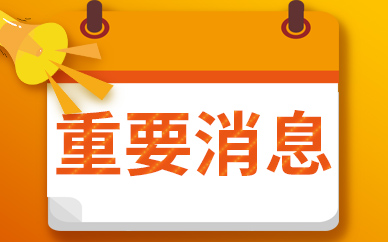Qt Model/View结构原理之QAbstractTableModel基本使用
一、Model/View基本原理
GUI应用程序开发中往往少不了列表框,表格,树形结构等表现形式的应用。当然Qt中也提供了相应的视图类QListView,QTableView, QTreeView,这些类使用模型/视图Model/View架构来管理数据之间的关系及其呈现给用户的方式。这种体系结构引入的功能分离为开发人员提供了更大的灵活性来定制数据项的表示,并提供了一个标准模型接口,允许在现有的视图中使用广泛的数据源。
Data:是实际数据,可以数据库的一个数据表或SQL查询结果,内存中的StringList,或文件等等。
 (资料图)
(资料图)
View:GUI界面组件,视图从数据模型获得每个数据线的模型索引(Model index),通过模型缩影获取数据,然后为界面组件提供显示数据。比如QListView,QTableView, QTreeView等。
Model:与实际数据通信,并为视图组件提供数据接口。可以理解成数据adapter,数据wrapper。它从原始数据提取需要的内容,用于视图组件进行显示和编辑。
这样设计的好处有:
通过Model/View使数据源与显示界面分离,代码解耦;
另外还可以将同一数据模型在不同的视图中显示;
还可以在不修改数据模型的情况下,设计特殊的视图。
Delegate:在model/view结构中,还提供了代理功能(Delegate),代理功能可以让用户定制数据的界面显示和编辑方式。
model,view,delegate之间使用信号和槽进行通信。当数据发生变化时,model通过信号通知view;
当用户在UI上操作数据时(选中,点击等),view通过信号表示这些操作信息;
当用户编辑数据时,delegate通过信号通知model和view编辑器的状态。
1.数据模型 Model
QAbstractItemModel是所有数据模型的基类,这个类定义了view和delegate存取数据的接口。但原始数据不一定要存储在model里。
而通常情况是我们使用QListView,QTableView, QTreeView都会使用与之相应的模型类,分别继承自QAbstractListModel,QAbstractTableModel,QAbstractItemModel,生成自己定制的数据模型类。
2.视图组件 View
视图组件View就是显示数据模型的数据的界面组件,Qt提供如下常用视图组件:
QListView:显示单列的列表数据,适用于一维数据的操作;
QTreeView:显示树状结构数据,适用于树状结构数据的操作;
QTableView:显示表格状数据,适用于二维表格型数据的操作。
视图类的setModel()函数,即可完成view和model的数据绑定,同时在view上的修改能自动关联到model。
3.代理 delegate
代理就是视图组件上为编辑数据提供编辑器,如在table组件中双击一个单元格编辑数据是,缺省是使用QLineEdit编辑框。代理的作用首先是从model中取数据,然后显示在编辑器中,修改数据后,又将其保存到model中。
通常使用需要派生自QStyledItemDelegate类,创建自定义代理类。
二、QAbstractTableModel使用
通过上面的分析,我们知道QAbstractTableModel,主要为QTableView提供数据模型接口,我们可以子类化该抽象类并实现相关接口。下面我们做一个简单9*9乘法口诀的demo来看一下具体使用方法:
必须要实现的接口如下3个:
//返回行数int rowCount(const QModelIndex &parent = QModelIndex()) const override;//返回列数int columnCount(const QModelIndex &parent = QModelIndex()) const override;//根据模型索引返回当前的数据QVariant data(const QModelIndex &index, int role = Qt::DisplayRole) const override;当然只有必须的3个接口,好像还不能很好的工作,首先我们需要给model赋初值。
新增setInitData成员函数,加载数据并刷新。
void MyTableModel::setInitData(QList& data){//重置model数据之前调用beginResetModel,此时会触发modelAboutToBeReset信号beginResetModel();//重置model中的数据m_datas = data;m_rowNum = ceil(data.size()*1.0/m_columnNum); //行数=数据总数/列数,然后向上取整//数据设置结束后调用endResetModel,此时会触发modelReset信号endResetModel();} 返回rowCount(),columnCount(),因为这里行列都是9,所以返回固定的9
int MyTableModel::rowCount(const QModelIndex &parent) const{if (parent.isValid()) {return 0;} else {return m_rowNum;}}int MyTableModel::columnCount(const QModelIndex &parent) const{if (parent.isValid()) {return 0;} else {return m_columnNum;}}行列的动态增删
因为这个9*9乘法口诀表行列是固定的,所以这里暂不需要对行列的操作,相关接口如下,可以按需增加。
//插入相关接口bool insertColumn(int column, const QModelIndex &parent = QModelIndex())virtual bool insertColumns(int column, int count, const QModelIndex &parent = QModelIndex())bool insertRow(int row, const QModelIndex &parent = QModelIndex())virtual bool insertRows(int row, int count, const QModelIndex &parent = QModelIndex())//删除相关接口bool removeColumn(int column, const QModelIndex &parent = QModelIndex())virtual bool removeColumns(int column, int count, const QModelIndex &parent = QModelIndex())bool removeRow(int row, const QModelIndex &parent = QModelIndex())virtual bool removeRows(int row, int count, const QModelIndex &parent = QModelIndex())最最重要的一个接口data()函数
view通过model提供的data()函数,进行自身的数据呈现,可以分不同维度提供不同的数据。
QVariant MyTableModel::data(const QModelIndex &index, int role) const{if (!index.isValid()) {return QVariant();}if(index.row()*m_columnNum+index.column() < m_datas.count()){if (role == Qt::DisplayRole || role == Qt::EditRole) {return m_datas[index.row()*m_columnNum+index.column()]->content;//数据的呈现形式}else if(role == Qt::BackgroundColorRole){return m_datas[index.row()*m_columnNum+index.column()]->bgColor;//单元格背景色}else if (role == Qt::TextAlignmentRole) { //对其方式return Qt::AlignCenter;}else if(role == Qt::ToolTipRole){return m_datas[index.row()*m_columnNum+index.column()]->toolTip;//数据的提示信息}else if(role == Qt::UserRole){return QVariant::fromValue(m_datas[index.row()*m_columnNum+index.column()]);}}return QVariant();}可以看到ItemDataRole的枚举,想要view以何种维度来展示数据,往这里面的else if里面写即可。
enum ItemDataRole {DisplayRole = 0,DecorationRole = 1,EditRole = 2,ToolTipRole = 3,StatusTipRole = 4,WhatsThisRole = 5,// MetadataFontRole = 6,TextAlignmentRole = 7,BackgroundRole = 8,ForegroundRole = 9,#if QT_DEPRECATED_SINCE(5, 13) // ### Qt 6: remove meBackgroundColorRole Q_DECL_ENUMERATOR_DEPRECATED = BackgroundRole,TextColorRole Q_DECL_ENUMERATOR_DEPRECATED = ForegroundRole,#endifCheckStateRole = 10,// AccessibilityAccessibleTextRole = 11,AccessibleDescriptionRole = 12,// More general purposeSizeHintRole = 13,InitialSortOrderRole = 14,// Internal UiLib roles. Start worrying when public roles go that high.DisplayPropertyRole = 27,DecorationPropertyRole = 28,ToolTipPropertyRole = 29,StatusTipPropertyRole = 30,WhatsThisPropertyRole = 31,// ReservedUserRole = 0x0100};默认情况下,双击是不能编辑的,可以重写成员函数flags(),setData(),让其具有编辑功能,并编辑框更改后的值能更新到model里,也能通知到view。
Qt::ItemFlags MyTableModel::flags(const QModelIndex &index) const{if (!index.isValid())return Qt::NoItemFlags;return Qt::ItemIsEnabled|Qt::ItemIsSelectable|Qt::ItemIsEditable;}bool MyTableModel::setData(const QModelIndex &index, const QVariant &value, int role){if(index.row()*m_columnNum+index.column() < m_datas.count()){if (index.isValid() && role == Qt::EditRole){m_datas[index.row()*m_columnNum+index.column()]->content = value.value();emit dataChanged(index, index, QVector() << role); //发送信号触发刷新return true;}if (index.isValid() && role == Qt::BackgroundColorRole){m_datas[index.row()*m_columnNum+index.column()]->bgColor = value.value();emit dataChanged(index, index, QVector() << role); //发送信号触发刷新return true;}}return false;} 使用代理(delegate)
tableview如果不指定delegate的话,默认是使用QLineEdit编辑框。通过前面介绍我们知道delegate的作用相当于model–view之间的桥梁,相互传递数据的作用。
我想实现双击,编辑单元格颜色的效果,如下图,该怎么做呢?
首先子类化QStyledItemDelegate,在实现基类4个虚函数,4个函数的作用,看注释应该都很清楚。delegate是桥梁,是中间人的角色,所以model—view两边都要安排好。
class MyColorSelDelegate : public QStyledItemDelegate{Q_OBJECTpublic:explicit MyColorSelDelegate(QObject *parent = nullptr);~MyColorSelDelegate();//创建用于编辑模型数据的widget组件,如一个QSpinBox组件,或一个QComboBox组件;QWidget* createEditor(QWidget *parent, const QStyleOptionViewItem &option, const QModelIndex &index) const override;//从数据模型获取数据,供widget组件进行编辑;void setEditorData(QWidget *editor, const QModelIndex &index) const override;//将widget上的数据更新到数据模型;void setModelData(QWidget *editor, QAbstractItemModel *model, const QModelIndex &index) const override;//用于给widget组件设置一个合适的大小;void updateEditorGeometry(QWidget *editor, const QStyleOptionViewItem &option, const QModelIndex &index) const override;signals:};其次createrEditor(),返回系统自带的QColorDialog颜色拾取框的QWidget对象指针,当然这里也可以是我们自定义的任何widget;
然后setEditorData(),从数据模型获取数据,供widget组件进行编辑;
最后setModelData(),将widget上的数据更新到数据模型;
QWidget *MyColorSelDelegate::createEditor(QWidget *parent, const QStyleOptionViewItem &option, const QModelIndex &index) const{QWidget* editor = new QColorDialog(parent);return editor;}void MyColorSelDelegate::setEditorData(QWidget *editor, const QModelIndex &index) const{}void MyColorSelDelegate::setModelData(QWidget *editor, QAbstractItemModel *model, const QModelIndex &index) const{QColorDialog* dlg = static_cast(editor);model->setData(index, dlg->selectedColor(), Qt::BackgroundColorRole);}void MyColorSelDelegate::updateEditorGeometry(QWidget *editor, const QStyleOptionViewItem &option, const QModelIndex &index) const{editor->setGeometry(option.rect);} 三、最后
通过QAbstractTableModel和QTableView的实际操作,我们应该能明白model/view的原理。
【领 QT开发教程 学习资料, 点击下方链接莬费领取↓↓ ,先码住不迷路~】
点击这里:
X 关闭
- Qt Model/View结构原理之QAbstractTableModel基本使用
- 心爱的心爱的
- 吸收外资开局稳 中国市场“磁力”足
- 仓山玉兰村:乡村“微”更新 宜居更宜人
- “河南种业第一股”首份A股年报:营收大增29%,科研取得多项突破
- 扬州小吃一条街哪个好_扬州小吃
- 环球热门:一个人想要和你深交,是会给你暗示的
- 今日热闻!学校“民转公”后,会有哪些变化?
- 中国经济有信心有能力行稳致远
- 利君股份(002651):4月20日北向资金增持39.6万股|微头条
- 消费如何更优质?随着全国各地政策激发 消费活力逐步显现
- 环球热讯:正裕工业(603089.SH):2022年净利润增长12.61%至7055.29万元 拟10派1元
- 巴州教育局24小时服务热线 巴市教育网官网_时讯
- 当前焦点!浙江高规格开启餐饮消费欢乐季 为经济发展添“食力”
- 全球快消息!中国经济走稳向好——解读一季度经济数据亮点
- 快讯:内饰很眼熟/配置还可以 沉浸式静态体验奇瑞瑞虎9
- 欧元区2月季调后经常账户盈余扩大至243.2亿欧元_环球观速讯
- 又一项新活动来啦!吉林特色放心消费伴手礼评测活动开始申报 今日播报
- 实时:明新旭腾: 第一创业证券承销保荐有限责任公司关于明新旭腾新材料股份有限公司使用部分闲置募集资金暂时补充流动资金的核查意见
- 瑞银上调中国今年GDP预测至约5.8%
- 东北地区最大储气库群新增外输通道
- A股收评:三大指数全线收跌,CPO、游戏等板块涨幅居前_动态
- 天天微速讯:2023年河北大工匠年度人物⑧丨高文庆:解译大地密码的“超能钻工”
- 北京:聚焦医院、养老机构、高层建筑等地,开展排查整治 天天热门
- 每日观点:涉案7000余万元!“家族企业”销售伪劣肥料、农药,负责人被判无期徒刑
- 今日看点:兴业基金任命叶文煌为董事长 官恒秋离任
- 【新视野】大河冰钓怎样找鲫鱼窝(野河冰钓鲫鱼技巧)
- 第19届北京国际体育电影周本月启动 环球即时
- TikTok电商数据服务平台“嘀嗒狗”完成数千万元Pre-A轮融资-环球速看
- 漯河市源汇区受降路小学开展研学实践活动 信息
- 看你怎么秀把房价降下来_看房价的app|全球热推荐
- 全球热消息:能“吸水”、会“变身”……“绿色办赛 智慧大运”从场馆开始
- 义乌吉通同城快递电话 义乌吉通同城快递 天天报资讯
- 道高一尺魔高一丈的意思解释 道高一尺魔高一丈的意思 聚焦
- 高华科技在科创板上市:超额募资约12亿元,IPO首日跌破发行价|世界最资讯
- 【世界速看料】今日纸黄金价格走势最新查询(2023年4月20日)
- 环球快报:喘组词_喘组词
- 快消息!中泰自然教育音乐大师课开课梁平,双桂湖畔追梦艺术
- 安排好了!《蚁人3》神秘代码来了!|热消息
- 当前速看:立新能源2022年净利1.96亿同比增长37.57% 董事长王博薪酬77.94万
- 朱晓彤卸任特斯拉合肥公司总经理!
- 今日热闻!突发!王唯楚全面回归!PG One突然露脸现身!居然被列入音乐节名单!
- 快来“躺平坪”!江苏徐州: 答好绿地“共享题”,自然生态“触手可及”
- 2023 Q1全球智能手机市场排行出炉:三星夺冠、小米成国产第一
- CNBC调查:美国民众对本国经济悲观情绪创新高|当前速看
- 港股异动 | 映宇宙(03700)再涨超5% 此前宣布接入GPT3.5turbo 将围绕AIGC做产品升级
- 全球快消息!农业农村部:生猪养殖有望在二季度末实现扭亏为盈
- 天天日报丨SMM快讯
- 每日报道:安阳市东门小学参加安阳市“国家中小学智慧教育平台”应用推进现场会
- 汕头流动就业养老金从哪儿领取?_天天报资讯
- 进口新车报道:阿尔法·罗密欧赛道限量版车型11月11日上市-环球热文
- 焦点简讯:李楠:苹果手机丢掉第一是合理的 产品太不思进取了
- 新款宝马X1售价28.89万起,外观与内饰大整改,并配备四驱系统|热消息
- 1-1到2-0,欧冠首开纪录!安帅瓜帅并列第1,米兰双雄嗅到不安
- 中芭明星首席邱芸庭等将倾情加盟第十三届“芭蕾创意工作坊”_全球视讯
- 电子社保卡,你会用吗?一图带你看懂→ 焦点速看
- 今日热讯:字如其人人如其字是什么意思(字如其人人亦如字是什么意思)
- 公仔玩具面料都有哪些品牌_公仔玩具面料都有哪些
- 【环球聚看点】伤残鉴定标准和赔偿标准_shangc
- Mysteel日报:今日螺纹期现价格小幅下跌
- 大跌吧友是什么梗_大爹 速看料
- 2023年天津大学附属中学艺术特长生招生怎么考试? 资讯
- 主力资金|人工智能概念板块拉高出货,资金尾盘抢筹旅游消费 世界动态
- 火山引擎:数字技术激发企业潜力,重回增长
- 直击华尔街| 美联储官员鹰派言论点燃加息预期 美股三大指数涨跌不一
- 全球速递!粉丝饭圈化是什么意思 粉丝饭圈化利大于弊
- 当前头条:深圳巨无霸旧改项目易主:万科大股东深铁接盘恒大项目,总投资将达464亿
- 全球热议:大庆杜蒙车管所:担当作为办实事 便民利企暖人心
- 每日简讯:小米米家多功能充电台灯今天开启众筹:一灯三用、79元
- 环球微资讯!白皮书:2026年母婴即时零售规模超千亿
- 看点:4月19日 10:22分 博世科(300422)股价快速拉升
- 华福证券给予安科瑞持有评级,能耗管控需求提升,掘金微电网蓝海_全球快看点
- 桔子分期逾期十二个月延迟还款会上征信吗
- 快船记者:球队应该对1-1的大比分感到开心,但G2本该赢-全球新消息
- ps暂存盘已满打不开ps怎么办_新手求助 暂存盘已满打不开PS怎么办
- 每日快播:小米13 Ultra 1TB版本预售秒罄、卢伟冰预言成真
- 可通过“通信ETF”配置算力板块_焦点关注
- 前沿资讯!女性脖子痒是什么原因_脖子痒是什么原因
- 世界视点!wey道怎么添加车辆?wey道可以绑定几个手机
- 天天速讯:《暗黑破坏神4》新截图曝光 梦魇地下城太可怕!
- 微软自研AI芯片“雅典娜”浮出水面,欲打破英伟达算力垄断
- 黄河文化论坛|好吃、好看、好玩……一个大集逛遍沿黄九省(区)
- 北京强化母乳喂养社会支持
- 德众汽车2022年营收同比下滑3.17% 深耕报废汽车拆解项目寻求突破点|当前报道
- 世界黄金协会:今年全球宏观环境等利于黄金表现|全球通讯
- 焦点!我市开展城乡环境卫生大清理大扫除大整治
- 印度一颁奖礼热死11人事件简单介绍
- 苏常柴A:厚生新能源为我公司参股公司,具体生产经营信息请查阅厚生新能源官方消息_环球热闻
- 802 11n和802 11g区别(802 11n)
- 环球热推荐:长着翅膀的大灰狼的作品流光系列(长着翅膀的大灰狼的作品)
- 每日精选:movie night是什么意思 night是什么意思
- 男生怎么去痘痘?|全球新要闻
- 民营企业怎么防“内贼”?盯紧关键岗,筑牢防火墙_独家
- cmcc是什么意思收费吗(cmcc是什么意思)
- 马斯克:我要弄个”真相GPT“
- 一季度GDP数据公布,通缩不存在
- 数学家的智慧胡和生文集_数学家胡和生的名言 焦点速看
- 无线路由器有辐射吗_你用对了吗_全球看热讯
- 为什么现在消费这么低迷 为什么现在消费这么高_天天观天下
- 油菜花开
Copyright © 2015-2023 今日商报网版权所有 备案号:沪ICP备2023005074号-40 联系邮箱:5 85 59 73 @qq.com










